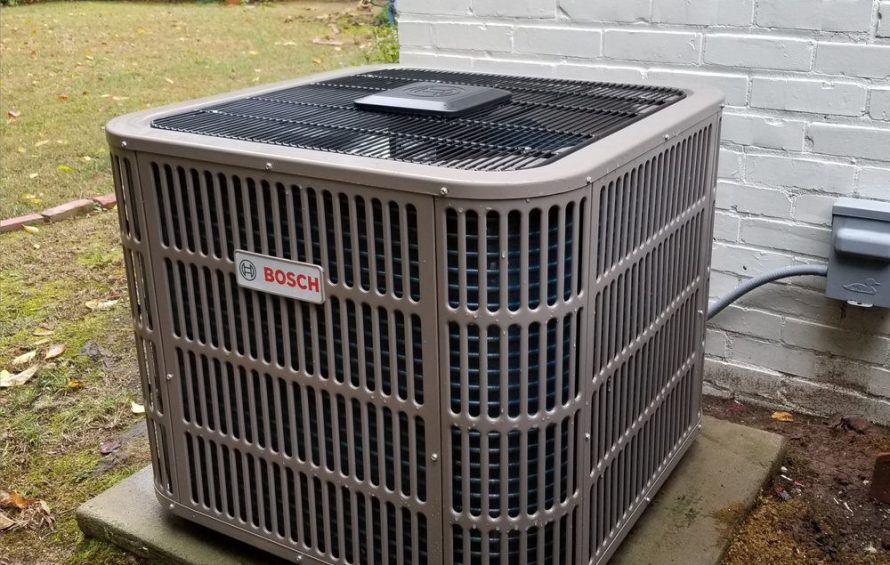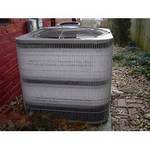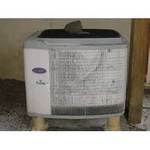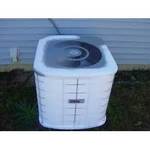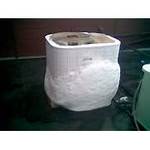How Does A Heat Pump Work
AIR-SOURCE HEAT PUMPS
If you have a heat pump with electric resistance heat as the supplemental heat source, keep the thermostat in the 'Heat' mode. Do NOT use the "Emergency Heat" setting unless it's really an emergency; for example, when the heat pump doesn't work. You won't notice a difference in how well it heats your home, but you will notice a difference in your electric bill.
An air-source heat pump can provide efficient heating and cooling for your home, especially if you live in a warm climate. When properly installed, an air-source heat pump can deliver one-and-a-half to three times more heat energy to a home than the electrical energy it consumes. This is possible because a heat pump moves heat rather than converting it from a fuel like combustion heating systems do.
Although air-source heat pumps can be used in nearly all parts of the United States, they do not generally perform well during extended periods of sub-freezing temperatures. In regions with sub-freezing winter temperatures, it may not be cost-effective to meet all your heating needs with a standard air-source heat pump.
Systems with gas heating as a backup can overcome this problem, however. Heat pumps specifically designed for cold climates also show promise.
For climates with moderate heating and cooling needs, heat pumps offer an energy-efficient alternative to furnaces and air conditioners. Like your refrigerator, heat pumps use electricity to move heat from a cool space to a warm space, making the cool space cooler and the warm space warmer. During the heating season, heat pumps move heat from the cool outdoors into your warm house and during the cooling season, heat pumps move heat from your cool house into the warm outdoors. Because they move heat rather than generate heat, heat pumps can provide equivalent space conditioning at as little as one quarter of the cost of operating conventional heating or cooling appliances.
The most common type of heat pump is the air-source heat pump, which transfers heat between your house and the outside air. If you heat with electricity, a heat pump can trim the amount of electricity you use for heating by as much as 30% to 40%. High-efficiency heat pumps also dehumidify better than standard central air conditioners, resulting in less energy usage and more cooling comfort in summer months. However, the efficiency of most air-source heat pumps as a heat source drops dramatically at low temperatures, generally making them unsuitable for cold climates, although there are systems that can overcome the problem.
HOW THEY WORK
A heat pump's refrigeration system consists of a compressor and two coils made of copper tubing (one indoors and one outside), which are surrounded by aluminum fins to aid heat transfer. In heating mode, liquid refrigerant in the outside coils extracts heat from the air and evaporates into a gas. The indoor coils release heat from the refrigerant as it condenses back into a liquid. A reversing valve, near the compressor, can change the direction of the refrigerant flow for cooling as well as for defrosting the outdoor coils in winter.
When outdoor temperatures fall below 40°F, a less-efficient panel of electric resistance coils, similar to those in your toaster, kicks in to provide indoor heating. This is why air-source heat pumps aren't always very efficient for heating in areas with cold winters. Some units now have gas-fired backup furnaces instead of electric resistance coils, allowing them to operate more efficiently.
The efficiency and performance of today's air-source heat pumps is one-and-a-half to two times greater than those available 30 years ago as a result of technical advances such as:
- Thermostatic expansion valves for more precise control of the refrigerant flow to the indoor coil
- Variable speed blowers, which are more efficient and can compensate for some of the adverse effects of restricted ducts, dirty filters, and dirty coils
- Improved coil design
- Improved electric motor and two-speed compressor designs
- Copper tubing, grooved inside to increase surface area.
Most central heat pumps are split-systems -- that is, they have one coil indoors and one outdoors. Supply and return ducts connect to a central fan, which is located indoors.
Some heat pumps are packaged systems. These usually have both coils and the fan outdoors. Heated or cooled air is delivered to the interior from ductwork that passes through a wall or roof.
SELECTING A HEAT PUMP
Every residential heat pump sold in this country has an EnergyGuide label, which displays the heat pump's heating and cooling efficiency performance rating, comparing it to other available makes and models.
Heating efficiency for air-source electric heat pumps is indicated by the heating season performance factor (HSPF), which is the total space heating required during the heating season, expressed in Btu, divided by the total electrical energy consumed by the heat pump system during the same season, expressed in watt-hours.
Cooling efficiency is indicated by the seasonal energy efficiency ratio (SEER), which is the total heat removed from the conditioned space during the annual cooling season, expressed in Btu, divided by the total electrical energy consumed by the heat pump during the same season, expressed in watt-hours.
The HSPF rates both the efficiency of the compressor and the electric-resistance elements. The most efficient heat pumps have an HSPF of between 8 and 10.
The SEER rates a heat pump's cooling efficiency. In general, the higher the SEER, the higher the cost. However, the energy savings can return the higher initial investment several times during the heat pump's life. A new central heat pump (SEER=12) replacing a 1970s vintage unit (SEER=6) will use half the energy to provide the same amount of cooling, cutting air-conditioning costs in half. The most efficient heat pumps have SEERs of between 14 and 18.
To choose an air-source electric heat pump, look for the ENERGY STAR® label. To qualify for the label, units must have SEERs of 12 or greater and HSPFs of 7 or greater. For units with comparable HSPF ratings, check their steady-state rating at -8.3 degrees C, the low temperature setting. The unit with the higher rating will be more efficient. In warmer climates, SEER is more important than HSPF. In colder climates, focus on getting the highest HSPF feasible.
These are some other factors to consider when choosing and installing air-source heat pumps:
- Select a heat pump with a demand-defrost control. This will minimize the defrost cycles, thereby reducing supplementary and heat pump energy use.
- If you're adding a heat pump to an electric furnace, the heat pump coil should usually be placed on the cold (upstream) side of the furnace for greatest efficiency.
- Fans and compressors make noise. Locate the outdoor unit away from windows and adjacent buildings, and select a heat pump with an outdoor sound rating of 7.6 bels or lower. You can also reduce this noise by mounting the unit on a noise-absorbing base.
- The location of the outdoor unit may affect its efficiency. Outdoor units should be protected from high winds, which can cause defrosting problems. You can strategically place a bush or a fence upwind of the coils to block the unit from high winds.
RESOURCE= DEPT.OF ENERGY
Below Is A Heat Pump Normal Operation of Defrost
Below is NOT Normal Operation Of A Heat Pump
